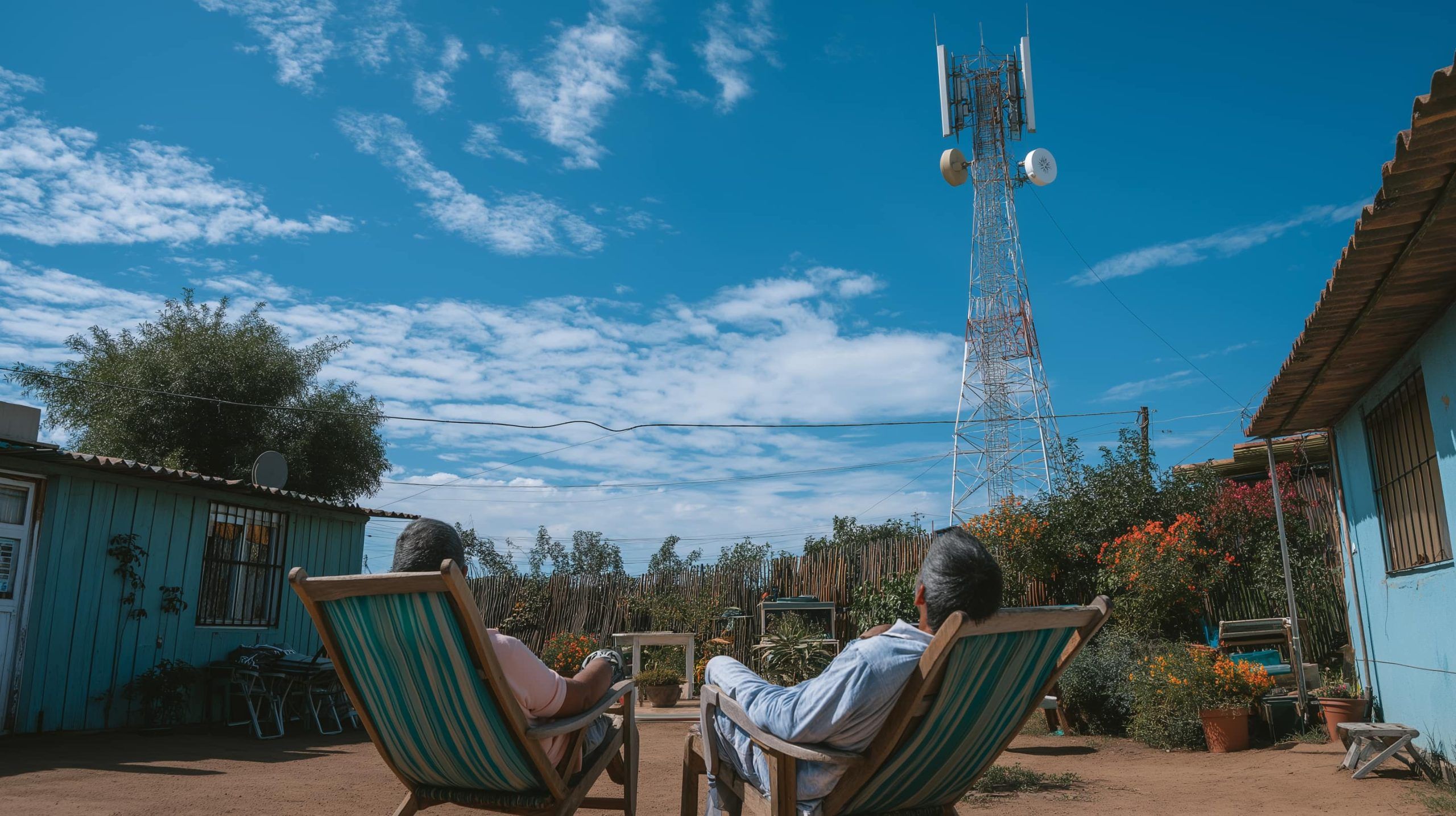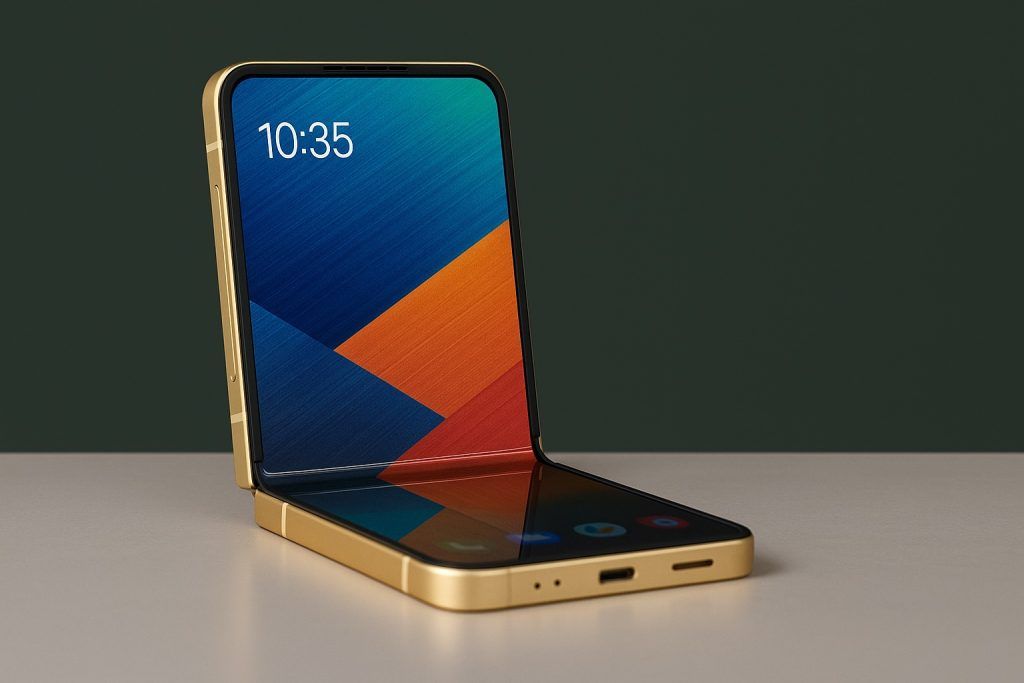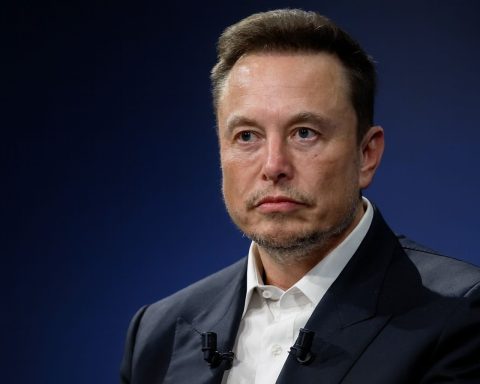- Paraguay had about 78% of its population online in 2025, below the Latin American average of about 85%, with urban usage over 80% and rural usage around 64%.
- 4G LTE networks now cover about 97% of the population, while commercial 5G had not launched as of 2023, with a 2024–2025 auction planned to reach 50% coverage a year after launch.
- Fixed broadband penetration is about 13% of the population, with urban fiber delivering roughly 100–150 Mbps and a national fiber backbone of about 18,000 km as of 2021.
- The internet market is dominated by Tigo Paraguay at about 42% share, Personal at about 26%, and Claro around 10–11%.
- Starlink received a CONATEL license to operate in October 2023; the first ground equipment arrived in November 2023, and by late 2023/early 2024 the service went live, with Starlink active in 28 Latin American countries including Paraguay by late 2024.
- Starlink hardware costs around $500 upfront and a monthly subscription of about $52 in Paraguay, more expensive than urban fiber plans around $18–$20 for 100–150 Mbps.
- Starlink traffic in Paraguay surged roughly 900× in 2024 after the launch, indicating strong demand in previously unserved areas.
- In 2018 Paraguay secured a $130 million IDB loan to support the Digital Agenda/Plan TIC 2022–2030, including MITIC’s program to connect thousands of schools with an estimated US$60 million budget for broadband in education and public spaces.
- Paraguay now has at least three diverse international fiber paths, with cross-border links to Argentina and Brazil via Itaipú, giving very good upstream diversity of international connectivity.
- Rural connectivity remains challenging: about 214,000 Paraguayans (over 3%) still rely on 3G or older networks, rural penetration rose from about 45% to 64%, and a US$6 million grant (2025–2029) will fund up to 3,600 rural sites while TEDIC calls for greater transparency and inclusive regulatory frameworks.
Overview: Paraguay’s Digital Landscape
Paraguay’s internet usage has grown rapidly but still lags behind regional peers. Roughly 78% of Paraguay’s population uses the internet, which is below the Latin American average (~85%) and far behind regional leaders like Chile (over 94%) [1] [2]. This places Paraguay in the middle-to-lower tier for internet penetration in South America. The country’s digital divide is evident in geography – urban areas enjoy much higher connectivity rates (over 80% internet usage) while rural areas trail significantly (around 64% usage) [3]. Bridging this gap has become a national priority, as Paraguay seeks to catch up with its neighbors in providing widespread internet access.
Several factors have shaped Paraguay’s internet landscape. As a landlocked nation, Paraguay historically depended on neighboring countries for international fiber links to submarine cables, which kept bandwidth costs high and hindered broadband growth [4]. Nevertheless, in recent years mobile networks have flourished and become the primary on-ramp to the internet for most Paraguayans. In the following sections, we delve into Paraguay’s traditional internet infrastructure versus emerging satellite services, covering accessibility, coverage, affordability, major providers, government initiatives, and how it all compares to the rest of Latin America.
Traditional Infrastructure: Broadband and Mobile Networks
Fixed broadband infrastructure in Paraguay has been slow to expand outside major cities. Only about 13% of Paraguay’s population has a fixed high-speed internet connection (via DSL, cable, or fiber), indicating that home broadband penetration is relatively low [5]. This low uptake is rooted in the country’s past: the state-run Copaco telecom had a monopoly on fixed lines for years, resulting in underinvestment and meager landline coverage (Paraguay has the lowest fixed-line density in South America) [6]. High costs and limited last-mile infrastructure kept fixed broadband largely confined to urban centers [7]. On the positive side, available broadband speeds in connected areas are decent – fixed networks average about 100 Mbps download speeds, ranking Paraguay around 55th globally in speed tests [8]. Fiber-optic deployment has gradually increased (with a national fiber backbone of ~18,000 km integrated across the country as of 2021), but the rural wired footprint remains limited.
By contrast, mobile networks are the backbone of Paraguay’s internet access. Mobile penetration is high – there are over 8.6 million mobile connections for 7 million people (about 1.3 mobile phones per person) [9] – and most Paraguayans get online via mobile data. Thanks to competitive investment in cellular coverage since the late 1990s, 4G LTE networks now cover about 97% of the population [10]. This near-universal 4G availability means even many rural Paraguayans can access at least basic mobile internet. However, 5G technology is still in its infancy in Paraguay. As of 2023 there was no commercial 5G network rolled out (only small pilots), and the telecom regulator plans to auction 5G spectrum in 2024–2025 with a goal of reaching 50% population coverage a year after launch [11] [12]. In the meantime, 4G and some 3G remain the workhorses for wireless internet. Mobile data speeds are serviceable though not exceptional – average mobile download speeds are around 18–19 Mbps [13], which is lower than in more developed markets, reflecting the dependence on 4G and the challenges of tower density in rural zones.
In terms of technology mix, Paraguay’s traditional internet includes DSL (over legacy copper telephone lines, mostly offered by Copaco), coaxial cable broadband in cities, and an increasing presence of fiber-to-the-home in urban areas via private ISPs. There have also been fixed-wireless broadband offerings (WiMAX/LMDS) to reach areas where laying cables is difficult. Still, given the geography and economic constraints, mobile broadband is the de facto solution for most households, while fixed broadband adoption grows slowly. The limitations of the traditional infrastructure – especially in remote regions – set the stage for alternative solutions like satellite internet, which we’ll explore later.
Accessibility, Coverage and Affordability
Despite the improvements in infrastructure, internet accessibility in Paraguay remains uneven. The urban-rural divide is stark: about 83% of urban residents are online vs. only 64% of rural residents [14]. This gap stems from coverage shortcomings and socioeconomic factors. Many rural communities are in hard-to-reach areas (for example, in the sparsely populated Chaco region or along Paraguay’s borders), where laying fiber or even maintaining cell towers is challenging. Some remote villages still lack reliable electricity or telephone lines, complicating connectivity efforts. Even where 4G signals reach, the quality of service in rural zones can be poor, with slower speeds and more congestion compared to Asunción or other cities. In short, being covered by a network doesn’t always equate to meaningful access, especially for Paraguay’s rural poor.
Affordability of internet service is another critical piece of the access puzzle. On paper, Paraguay fares relatively well in affordability metrics. A basic mobile internet and voice package costs around US$13.90 per month on average, which is about 2.7% of the average monthly income (GNI per capita) [15]. This share of income spent on mobile connectivity is actually better than the world average (~4.5%) [16] and meets international affordability targets. In practical terms, mobile data plans in Paraguay are reasonably priced compared to many countries, due in part to competition among carriers. The cost of 1GB of data or a budget smartphone is within reach for middle-class consumers. Fixed broadband, when available, also has moderate pricing – for example, urban fiber plans of 100–150 Mbps can cost on the order of Gs.120,000–130,000 per month (approximately $18–$20) according to local reports [17].
However, national averages mask the affordability challenges in low-income and rural segments. For poorer Paraguayans, even $10–$20 a month can be prohibitive, especially if additional costs like smartphones or computers are considered. Many rural families rely on prepaid mobile data and use free Wi-Fi hotspots (where available) to save money. The government’s data shows about 2.69% of GNI per capita is needed to cover a basic 3G/4G internet package [18], but for someone living in poverty, that percentage of income is much higher. Moreover, the upfront cost of devices and the lack of digital literacy can be barriers. Paraguay’s government and NGOs recognize that closing the digital divide isn’t just about signal coverage – it’s also about economic inclusion and education [19]. Initiatives are underway to provide free internet access in public spaces, distribute devices to students, and teach digital skills, to ensure that connectivity translates into actual usage and benefits.
Major Providers and Market Dynamics
Paraguay’s internet service market is dominated by a few key players, reflecting a concentrated telecom sector with limited competition. The top two ISPs account for nearly 70% of the market by subscriptions: Tigo Paraguay (owned by Millicom) is the largest with about 42% market share, and Personal (Núcleo S.A.) is second with roughly 26% share [20]. Tigo operates both mobile (cellular networks) and fixed broadband (including cable and fiber) services and has been the market leader for years. Personal is the brand of Núcleo S.A., a consortium affiliated with Telecom Argentina, and is a strong competitor in mobile telephony and mobile internet.
Behind these two, other players have much smaller slices. Claro Paraguay (part of América Móvil) is the third major mobile operator – its market share is around 10–11% [21]. Claro offers mobile services nationwide and some fixed internet in urban areas, but lags Tigo and Personal in subscriber numbers. The state-owned Copaco (and its mobile arm Vox) also provides internet services, though its role has diminished. Copaco retains a near-monopoly in the aging DSL fixed-line segment (due to lack of local loop unbundling) [22], but it has struggled with inefficiency and limited coverage. In mobile, Copaco’s “Vox” has been a minor fourth operator with a small niche of users [23]. There are also dozens of smaller ISPs and wireless providers serving regional markets or specific business segments, including a few using fixed-wireless or satellite for remote clients. For example, companies like Techtel/VOX and others cater to corporate or rural connectivity needs, but none approach the big three in scale [24].
Overall, Paraguay’s telecom market competition is considered poor in terms of consumer choice and pricing power [25]. The Internet Society’s 2025 index rated Paraguay’s market competitiveness as “Poor” [26], indicating that the dominant providers face little pressure outside of each other. This oligopolistic scenario can lead to higher prices or weaker incentives to invest, especially in less profitable rural areas. Indeed, the top firms have focused their investments on urban fiber and 4G expansion where returns are highest, while rural infrastructure has relied more on government programs or subsidies. Still, the presence of three private operators and one public means there is at least basic competition in mobile services, which has helped keep mobile data tariffs relatively affordable by global standards [27].
It’s worth noting that foreign investment and regional telecom groups play a big role in Paraguay. Millicom (Tigo) and América Móvil (Claro) are multinational companies, and Telecom Argentina’s involvement via Personal means Paraguay’s connectivity is tied into broader Latin American telecom networks. This has some upsides, such as access to technical expertise and regional backbone infrastructure. On the other hand, it raises the importance of regulatory oversight to ensure these giants don’t abuse their market power. Paraguay’s telecom regulator CONATEL has historically had mixed success in fostering competition – an attempt to privatize Copaco in 2002 failed, and only in 2009 was Copaco’s monopoly on international internet gateways broken to allow private operators their own bandwidth links [28] [29]. Since then, companies like Tigo and Personal have established their own international fiber routes, improving Paraguay’s connectivity to the global internet. Today Paraguay has multiple upstream connections via Brazil and Argentina, giving it “very good” diversity of international access (more than two distinct routes), which boosts resilience [30].
Government Initiatives and Connectivity Programs
The Paraguayan government recognizes that internet access is key to economic and social development, and it has launched several national initiatives to expand connectivity. A cornerstone strategy is the Digital Agenda of Paraguay, which began in 2011 and has evolved into the current Plan Nacional TIC 2022–2030 (National ICT Plan). This plan’s goals include consolidating digital infrastructure, closing access gaps, and connecting public institutions and underserved areas [31] [32]. In 2018, Paraguay secured a $130 million loan from the Inter-American Development Bank (IDB) to support these digital agenda projects through 2025 [33]. That funding has been channeled into improving e-government services, expanding fiber-optic networks, and deploying connectivity to schools and communities. The Plan TIC emphasizes “Internet gratuito en espacios públicos” (free Wi-Fi in public spaces), broadband for homes/SMEs, and digital infrastructure for education and health sectors as key initiatives [34] [35].
Connecting schools has been a particularly high priority. Paraguay’s ICT Ministry (MITIC) launched a program to bring broadband to thousands of schools across the country, with a substantial budget (reportedly around US$60 million) financed by the national education innovation fund (FEEI). This project has already connected hundreds of schools and aims to equip remaining rural schools with internet access and digital labs. (As of 2023, local news noted this education connectivity project was well underway [36].) In addition, Paraguay participates in regional efforts like the “Internet para Todos” initiative in partnership with multilateral organizations, focusing on connecting rural communities and public facilities. The government has also used the Universal Service Fund (fed by telecom operators) to subsidize rural telecommunications projects – for instance, an earlier “Paraguay Conectado” program used USF money to build out rural broadband and wireless access between 2009–2013 [37] [38].
To implement these programs, coordination with international partners has been crucial. MITIC works closely with organizations like the IDB, the International Telecommunication Union (ITU), and the World Bank [39]. There have been collaborations with neighboring countries too – for example, Paraguay and Argentina signed a “Connectivity Strengthening” agreement to interconnect their fiber networks at border crossings (such as Clorinda–Formosa) [40]. Such cross-border fiber links will give Paraguay more direct routes to submarine cable landing stations, reducing dependency and cost. Likewise, Paraguay engages with Brazil on sharing backbone infrastructure (e.g. through Itaipú Binational’s fiber) to improve redundancy. Being landlocked, these partnerships are essential for Paraguay to achieve “sovereign management” of its international fiber connectivity rather than relying solely on third-party carriers [41] [42].
Another notable collaboration is with the United States, which in 2025 announced a grant to boost Paraguay’s digital inclusion. The U.S. State Department is funding a $6 million project (2025–2029) aimed at “Advancing Secure Digital Connectivity in Paraguay.” This program will install internet access points at up to 3,600 rural sites (such as remote schools, clinics, and community centers), build local capacity for maintaining these networks, and conduct digital literacy training in rural communities [43] [44]. The project aligns with Paraguay’s upcoming 5G rollout and overall digital agenda, and involves coordination with MITIC and CONATEL to ensure sustainability [45] [46]. It’s a clear example of international support to complement Paraguay’s internal efforts in narrowing the connectivity gap.
The government is also pushing regulatory measures to improve services. CONATEL’s National Telecommunications Plan 2021–2025 set targets of achieving 100% 4G coverage and launching 5G to cover half the population by 2025 [47] [48]. While ambitious, these targets signal the political will to modernize networks. Furthermore, new laws (like a Zero-Paper Digital Government law and an Electronic Communications law update) are being passed to facilitate infrastructure sharing and attract private investment. The bottom line is that Paraguay’s government, with help from international partners, is investing in both hard infrastructure (fiber, towers, satellite gateways) and soft infrastructure (policies, training) to ensure that internet access reaches all citizens at affordable prices.
Rural Connectivity Challenges
Reaching Paraguay’s rural and remote communities with reliable internet remains a formidable challenge. While nearly all Paraguayans live within range of a mobile signal, the reality on the ground in many villages is that connectivity is slow, intermittent, or prohibitively expensive. Rural parts of Paraguay often have sparse population density – especially in the western Chaco region where isolated ranches and indigenous settlements are far from any town. For private telecom operators, the return on investment for building cell towers or fiber lines to these areas is low, so they historically focused on cities. This has left a patchwork of rural coverage: some villages have only 2G/3G service, some have 4G but with a weak signal, and some (albeit a shrinking number) have no service at all. According to one analysis, as of recently about 214,000 Paraguayans (over 3% of the population) still had to rely on 3G or older networks – essentially those in the last uncovered pockets [49] [50].
Geography and infrastructure present physical obstacles. The Chaco has vast wetlands and forests that make construction difficult, and seasonal floods can cut off sites. Even in more populated eastern Paraguay, rolling hills and rivers mean many rural communities are down dirt roads where fiber cables haven’t been laid. Additionally, the electrical grid doesn’t fully reach some remote areas, which complicates running telecom equipment (though solar-powered cell sites are an option). The government’s rural connectivity projects have addressed some of these issues by building microwave radio links or small solar-powered base stations for 4G in villages. Nonetheless, maintenance of equipment in remote areas is tough – there are stories of communities losing internet for weeks when a single tower goes down, due to slow repair turnaround.
Another challenge is human and economic: many rural inhabitants are low-income farmers or indigenous people who may not readily afford data plans or lack the digital literacy to make use of the internet. Even if a school gets connected, ensuring that teachers and students know how to utilize online resources is an ongoing task. NGOs like TEDIC in Paraguay stress that digital inclusion efforts must go hand-in-hand with connectivity – providing training and local content relevant to rural users, in Spanish and Guarani (the local language) [51] [52]. Without such support, there’s a risk that new infrastructure sits underused, or benefits only a small elite.
Affordability in rural areas is double-edged. On one hand, mobile prepaid data in Paraguay is inexpensive (a few dollars can buy enough data for messaging and basic web use), which is helpful for rural users. On the other hand, the cost of better-quality internet (e.g. a fixed broadband link or a high-capacity data plan) is out of reach for many rural families who live subsistence lifestyles. For isolated areas not served by any ISP, the only options historically were pricey satellite links or long-distance Wi-Fi relays – neither of which villagers could individually afford. This is why government or donor-funded programs (providing free or subsidized internet to community centers, schools, etc.) are so critical in rural Paraguay. They effectively pool resources to give an entire community access, whereas private market forces alone would leave these communities offline.
In summary, Paraguay’s rural connectivity gap is not just a technology issue but a multifaceted one: distance, terrain, poverty, education, and weak competitive incentives all intersect. The country is addressing these by subsidizing rural network expansion, embracing new tech like satellites, and involving local communities in solutions (for example, training local “internet promoters” who can maintain equipment and teach others). Significant progress has been made – the rural internet penetration jumped from around 45% a few years ago to 64% now [53] [54] – but reaching the last unreachable areas and ensuring meaningful use of the internet there will require sustained effort and innovation.
International Collaborations Boosting Connectivity
Given its challenges, Paraguay has leaned on international collaborations to improve its internet access scenario. We’ve already noted financial support from the IDB and technical cooperation with ITU/World Bank in shaping national broadband plans [55] [56]. These partnerships inject not only money but also expertise and best practices from around the world. For instance, under ITU guidance, Paraguay has examined ways to use its Universal Service Fund more effectively to incentivize rural telecom projects, learning from models in other countries [57]. The IDB loan, besides building infrastructure, has helped Paraguay modernize telecom regulations and build an “enabling environment” for connectivity expansion in line with global standards.
Regional integration efforts are also key. Paraguay is a member of MERCOSUR, and through this bloc it has negotiated better roaming agreements and internet exchange connectivity with neighbors. Cross-border fiber optic projects with Brazil and Argentina stand out as critical collaborations. One major goal is to have direct Paraguayan-controlled fiber routes to the Atlantic submarine cable landing stations (in Brazil, for example) so that the country is not entirely dependent on buying bandwidth from foreign carriers. In recent years, Paraguay worked with Argentina to interlink fiber networks at their border; likewise, the bi-national Itaipú hydroelectric dam (shared with Brazil) facilitated laying fiber alongside the power transmission lines, creating a high-capacity route out of Paraguay [58]. As a result, Paraguay now has at least three diverse international fiber paths and has achieved “very good” upstream diversity, meaning it could handle a cut on one line by rerouting traffic through others [59]. This resiliency is a direct outcome of international cooperation in infrastructure.
Collaboration with foreign tech companies has played a role too. For example, Google’s Project Loon (balloon-based internet) ran a pilot in 2017 delivering internet to remote parts of Puerto Rico and Peru; Paraguay’s regulators expressed interest in such technologies, and while Loon was later discontinued, it set a precedent for embracing innovative solutions via partnership. More concretely, SpaceX’s Starlink entry into Paraguay (discussed in the next section) was facilitated by a regulatory green light in coordination with global efforts to expand satellite coverage. Paraguay was among the first ten countries in Latin America to license Starlink, thanks to dialogue between CONATEL and the company [60].
The United States has emerged as a significant partner recently. The aforementioned $6 million U.S. grant for rural connectivity is part of a broader U.S. initiative to promote secure digital infrastructure in the Americas [61]. This project doesn’t just fund hardware; it also builds local capacity and cybersecurity awareness in Paraguay – showcasing how international assistance can be holistic. Similarly, Paraguay has worked with the Organization of American States (OAS) on cybersecurity and with UNESCO on using ICT in education. Even private foreign entities like Cisco and Microsoft have run training programs or donated networking equipment to Paraguayan schools, under their global social responsibility outreach.
Finally, neighboring countries’ experiences offer a roadmap and cautionary tales. Paraguay often looks to countries like Uruguay (which achieved near-universal fiber-to-home) and Argentina or Brazil (which have larger-scale 4G and upcoming 5G deployments) for lessons. Knowledge-sharing through regional telecom forums helps Paraguay avoid pitfalls. Conversely, international watchdogs and NGOs keep an eye on Paraguay’s policies – for example, the Electronic Frontier Foundation evaluated Paraguayan ISPs (including Copaco and Tigo) on privacy practices [62], pushing them towards better standards in handling user data. All told, Paraguay is not tackling its internet challenges alone; international collaboration is woven into its strategy, bringing in funding, technology, and ideas to transform the country’s connectivity landscape.
Satellite Internet: The Starlink Revolution and Its Impact
In the past, if you lived in a Paraguayan cattle ranch or indigenous village far from any town, your only option for internet was via satellite – typically slow and costly. Traditional satellite ISPs used geostationary satellites (35,000 km above Earth), which meant high latency (half-second delays) and limited bandwidth. Indeed, Paraguay had a couple of such providers: Argentina’s state-owned ARSAT offered satellite internet with speeds up to ~10 Mbps, and U.S.-based Skycasters offered up to ~25 Mbps, but both were niche services with high prices and installation costs [63]. These legacy satellite connections were often used by large farms, government outposts, or expats willing to pay a premium; they were not a scalable solution for mass connectivity.
Enter Starlink, Elon Musk’s SpaceX-operated satellite broadband constellation, which has been a potential game-changer for countries like Paraguay. Starlink uses low-Earth orbit (LEO) satellites at ~550 km altitude, dramatically reducing latency and enabling true broadband speeds from space [64]. Its high-speed, low-latency service can deliver 100–150 Mbps downlink, comparable to urban fiber in performance – an enticing proposition for rural areas with “no bars” on cell phones. Recognizing this, Paraguay moved quickly to embrace Starlink. In October 2023, Paraguay’s telecom regulator (CONATEL) granted Starlink a license to operate, making Paraguay the 8th country in Latin America to approve the service (joining Brazil, Chile, Colombia, and others) [65]. The launch had strong support from the Ministry of ICT (MITIC), which hailed satellite internet as crucial for connecting the hardest-to-reach parts of the country [66]. The first Starlink ground equipment arrived in Paraguay by November 2023, and the service went live shortly thereafter [67].
Initial impact and reception of Starlink have been significant. Although exact subscriber numbers in Paraguay aren’t public yet, early indicators show a huge pent-up demand. According to network data, internet traffic routed via Starlink in Paraguay jumped by 900x in 2024 after the launch, reflecting how many users immediately started using the service in previously unserved areas [68]. This astounding increase (albeit from a near-zero baseline) underscores that remote communities were eager for a viable connectivity option. By late 2024, Starlink reported being live in 28 Latin American countries including Paraguay, as part of its rapid global rollout [69]. In larger countries like Brazil and Mexico, tens of thousands of users have signed up within the first year of availability, and while Paraguay’s absolute uptake might be smaller due to population, on a per-capita basis it could be quite high. Starlink’s ability to deliver broadband to “off-grid” locations fills a crucial gap – for example, it can connect a rural school or health clinic with no fiber or 4G coverage, simply by installing a satellite dish on site. This aligns with Paraguay’s goal of linking remote public services to the digital world.
However, Starlink is not a silver bullet, and it comes with caveats. The cost is still relatively high for ordinary Paraguayans. As per CONATEL, the Starlink hardware kit costs around $500 USD upfront, and the subscription is about $52 USD per month in Paraguay [70]. Compared to typical urban internet bills (about $20 for 150 Mbps fiber) [71], Starlink is more than double the price. Thus, for customers in Asunción or other cities who already have cheaper fiber or LTE home broadband, Starlink isn’t economically attractive – and officials acknowledge urban users will likely “continue to opt for more economical alternatives” [72]. The real value of Starlink is in areas with no service at all, where the alternatives (if any) were even costlier or slower. In those contexts, $52 a month for 100+ Mbps is actually a breakthrough; earlier satellite plans of 4 Mbps could cost several hundred dollars a month, for instance. A CONATEL engineer noted that in unserved rural zones, prior alternatives were “much more expensive” than Starlink’s offering [73]. In effect, Starlink can drastically improve connectivity for remote farms, villages, and border areas – but its price point means it may be used more by institutions (schools, clinics, community Wi-Fi hubs) or well-off individuals, rather than every rural household. There is hope that costs will come down over time or that government programs might subsidize Starlink for critical locations.
The arrival of Starlink has also sparked conversations about its broader implications. Paraguayan digital rights groups like TEDIC have raised thoughtful concerns regarding Starlink – not to oppose it, but to ensure it’s implemented in the public interest. They highlight issues such as the need for digital inclusion (will Starlink help the poorest, or only those who can pay?), potential monopolization of satellite spectra, and the importance of protecting data privacy over satellite links [74] [75]. Environment and sovereignty are also discussed: Starlink’s mega-constellation raises global worries about space debris and astronomical interference [76], and on a national level, some ask what it means for a foreign company to effectively become part of critical connectivity infrastructure. TEDIC has requested transparency on Paraguay’s agreement with Starlink – e.g. whether any Universal Service Funds or government incentives were given, and how the service will be extended to underserved communities [77] [78]. As of early 2024, CONATEL provided only partial info, and TEDIC is pressing for more disclosure or even regulatory frameworks to address satellite ISPs [79] [80].
From a technical and strategic viewpoint, satellite internet like Starlink is a powerful complementary solution for Paraguay. It won’t replace fiber or mobile in the cities, but it can connect the unreachable corners and serve as a backup in disaster scenarios. Paraguay’s location (with frequent severe weather in some regions) means having an independent satellite link can be lifesaving if terrestrial networks go down. Starlink itself has touted such use cases in Latin America – for instance, as backup connectivity during floods or to monitor remote environmental conditions [81]. The Paraguayan government sees Starlink as part of building a “more connected and digitally integrated Paraguay” that benefits education, health, and development everywhere [82]. One can imagine a rural clinic using telemedicine via Starlink, or an indigenous community accessing e-learning content, dramatically improving quality of life.
In summary, the impact of Starlink in Paraguay is just beginning, but it already represents a leap forward for satellite internet penetration. It has exposed hidden demand for broadband in rural areas and provided a tool to meet that demand. The challenge ahead will be making sure this tool is used effectively and inclusively. Paraguay might explore public-private partnerships where, for example, the state or NGOs deploy Starlink in community centers and provide free Wi-Fi to locals, thus spreading the benefit. Also, competitors are on the horizon: OneWeb (another LEO constellation) and Amazon’s Project Kuiper could eventually offer services in the region, which might drive prices down. For now, Starlink has the first-mover advantage and has quite literally brought remote parts of Paraguay onto the global internet map.
Latin American Context: How Paraguay Stacks Up
To put Paraguay’s internet access in perspective, it helps to compare with other countries in Latin America. In terms of internet penetration, Paraguay (~78% of people online) is below the regional average and trails countries like Argentina (89%) and Brazil (84%), though it edges out a few others like Ecuador (73%) [83] [84]. The Latin America/Caribbean average is around 83–85% internet usage, so Paraguay is a bit behind the curve. One reason is the rural gap – more urbanized nations or those with smaller geography (like Uruguay or Costa Rica) have managed to connect a larger share of their populace. By contrast, Paraguay’s combination of lower GDP and difficult rural expanses has made reaching that last 20–25% of the population harder. Nonetheless, Paraguay has vastly improved from a decade ago (it was only ~24% in 2011) [85] and is on track to keep rising.
For fixed broadband penetration, Paraguay is notably low compared to its neighbors. Only about 13% of Paraguay’s population (roughly half of households) has a fixed line broadband subscription [86], whereas countries like Chile, Brazil, and Argentina have over 60–70% of households with fixed broadband (and in Chile’s case, a large portion via fiber). In fact, Chile is a regional leader with extensive fiber-to-the-home, contributing to its very high internet usage rate. Paraguay’s 13% figure highlights how most Paraguayans rely on mobile networks instead. The Latin American average for fixed broadband (by households) was about 50% in 2022 and rising [87], which underscores Paraguay’s lag. However, when looking at mobile broadband, Paraguay is more aligned with the region. Its mobile penetration (130% of population) is similar to neighbors (many Latin Americans have multiple SIM cards or a work and personal phone). 4G coverage at ~97% of population in Paraguay is actually on par with or even slightly above some peers – for instance, Brazil’s 4G population coverage is also around 97-98%, and others like Peru and Colombia have been catching up in the 90% range. So Paraguay did relatively well in rolling out 4G widely, thanks to its flat terrain in the east and the competitive push by operators [88].
Internet speed and quality is another area of comparison. Paraguay’s average fixed broadband speed (~85–100 Mbps) is respectable but not top-tier in the region. Countries like Uruguay and Chile boast much higher averages (Chile often ranks #1 in Latin America for speed, with many fiber users averaging several hundred Mbps). Paraguay’s rank of ~55th globally for fixed speed [89] is mid-pack – faster than some (e.g. much of Central America or Andean countries) but slower than the Southern Cone leaders. On mobile speeds (~18 Mbps), Paraguay is a bit sluggish; opensignal reports often show countries like Brazil, Mexico, and Peru with higher mobile speeds, possibly due to better 4G LTE Advanced networks or less congestion. Part of Paraguay’s mobile speed limitation might be spectrum allocation – until 5G arrives, they are squeezing what they can out of 4G. The upcoming 5G auction, if successful, could vault Paraguay forward in wireless capabilities by late 2025, potentially allowing it to leapfrog in mobile performance.
Affordability and pricing in Paraguay versus others is a nuanced comparison. As mentioned, Paraguay’s relative cost of mobile service (as % of income) is quite good [90]. This might be attributed to a combination of lower pricing and the fact that Paraguay’s income, while not high, is enough that a $10 plan is only a few percent of it. In some poorer countries, a similar $10 plan could be 10%+ of income. When we compare absolute prices: a basic mobile data plan in Paraguay might be, say, $5–$10 for a few GB – that’s on par or cheaper than in Argentina or Brazil. Fixed broadband at ~$20 for 100 Mbps is also a bargain by regional standards (in Argentina or Brazil, prices for 100 Mbps can range $20–$30, though those countries also have ultra-cheap plans at lower speeds). One area Paraguayans pay more is for high-end connectivity: because of limited competition, things like dedicated business broadband or enterprise fiber are relatively costly. Also, imported tech (routers, smartphones) can be expensive due to landlocked logistics and import taxes.
One stark contrast is with Uruguay, a much smaller nation but one that achieved near-universal fiber coverage through its state company ANTEL. Uruguay’s internet indicators (over 90% usage, high speeds, low cost per Mbps) show what strong political commitment and investment can do. Paraguay, with a much larger and tougher territory, hasn’t been able to replicate that, though it aspires to similarly connect all schools and public offices. Brazil and Argentina, Paraguay’s big neighbors, have a mix of urban excellence and rural gaps, not entirely unlike Paraguay. Northern Argentina, for example, shares some challenges with Paraguay’s interior. But because those countries are larger economies, they’ve seen more private initiatives bridging gaps (like community networks in Argentina’s Chaco or extensive satellite use in Amazonian Brazil). Paraguay is learning from those models as well.
In summary, Paraguay is playing catch-up in Latin America’s digital race. It’s not at the bottom (countries like Honduras or Nicaragua have lower internet penetration and infrastructure levels), but it’s certainly not at the top with Chile or Uruguay either. The encouraging sign is that Paraguay’s growth rates in connectivity are high – it’s closing the distance gradually. If initiatives like the rural connectivity programs and Starlink deployment pan out, Paraguay could significantly raise its standings by the late 2020s. Ultimately, the goal is to ensure Paraguayans enjoy the same level of access and digital opportunities that people in more connected Latin American countries do. Achieving that will mean continuing to invest and perhaps even accelerating the momentum through innovative approaches and regional cooperation.
Conclusion
The state of internet access in Paraguay is at a pivotal point. On one hand, traditional infrastructure – mobile networks, fiber optics, and broadband services – has expanded substantially in the last decade, bringing three-quarters of the population online and delivering fast connections to the main cities. On the other hand, rural and low-income Paraguayans still face hurdles in connectivity, from coverage gaps to affordability and digital literacy issues. The Paraguayan government, alongside private sector and international allies, is mounting a comprehensive effort to address these challenges: modernizing regulations, funding rural networks, connecting schools, and encouraging competition.
Perhaps the most intriguing development is the rise of satellite internet solutions like Starlink, which promise to shrink Paraguay’s vast distances and reach the “final frontier” communities that terrestrial networks struggle with. The early impact of Starlink in Paraguay shows both tremendous promise (huge demand and immediate use in isolated areas) and the need for thoughtful integration (ensuring it benefits all segments of society, not just those who can pay). In any case, Paraguay is no longer an afterthought in the digital realm – it is actively pursuing an internet revolution, combining traditional and cutting-edge approaches to ensure that even a landlocked developing country can vault into the connected future.
The coming years will determine how successfully Paraguay can leverage these tools. Will every village have access to tele-health and e-learning? Will farmers use real-time data for agriculture in the Paraguayan countryside? The foundations are being laid now. If current trends continue, Paraguay’s 2030 vision of a “connected, competitive, and inclusive” nation [91] [92] might well be within reach. The story of Paraguay’s internet access is one of overcoming odds – and as of 2025, that story is still being written, one new connection at a time.
Sources:
- Internet Society Pulse – Country Report: Paraguay [93] [94] [95] [96]
- WorldData.info – Telecommunication in Paraguay [97] [98] [99]
- Developing Telecoms (BuddeComm) – Paraguay Market Report (2021) [100] [101]
- TEDIC – “Starlink in Paraguay: risks or concerns” (Jan 2024) [102] [103] [104] [105]
- Business Insider – Starlink Traffic Tripled in 2024 [106]
- TeleGeography Blog – Starlink in Latin America (Nov 2024) [107] [108]
- TheGlobalEconomy.com – Internet users – Latin America (World Bank data) [109] [110]
- Digital Watch Observatory – Paraguay Digital Agenda & Plan TIC 2030 [111] [112] [113]
- HigherGov (US State Dept. grant summary) – Advancing Secure Digital Connectivity in Paraguay [114]
References
1. pulse.internetsociety.org, 2. www.theglobaleconomy.com, 3. pulse.internetsociety.org, 4. developingtelecoms.com, 5. www.worlddata.info, 6. developingtelecoms.com, 7. developingtelecoms.com, 8. www.worlddata.info, 9. www.worlddata.info, 10. developingtelecoms.com, 11. www.worlddata.info, 12. www.bnamericas.com, 13. pulse.internetsociety.org, 14. pulse.internetsociety.org, 15. www.worlddata.info, 16. www.worlddata.info, 17. www.tedic.org, 18. pulse.internetsociety.org, 19. www.tedic.org, 20. pulse.internetsociety.org, 21. pulse.internetsociety.org, 22. developingtelecoms.com, 23. developingtelecoms.com, 24. pulse.internetsociety.org, 25. pulse.internetsociety.org, 26. pulse.internetsociety.org, 27. www.worlddata.info, 28. developingtelecoms.com, 29. developingtelecoms.com, 30. pulse.internetsociety.org, 31. dig.watch, 32. dig.watch, 33. dig.watch, 34. dig.watch, 35. dig.watch, 36. www.bnamericas.com, 37. www.itu.int, 38. www.itu.int, 39. dig.watch, 40. www.bnamericas.com, 41. www.bnamericas.com, 42. developingtelecoms.com, 43. www.highergov.com, 44. www.highergov.com, 45. www.highergov.com, 46. www.highergov.com, 47. www.convergencialatina.com, 48. www.convergencialatina.com, 49. www.worlddata.info, 50. www.worlddata.info, 51. www.tedic.org, 52. www.tedic.org, 53. pulse.internetsociety.org, 54. pulse.internetsociety.org, 55. dig.watch, 56. dig.watch, 57. www.itu.int, 58. developingtelecoms.com, 59. pulse.internetsociety.org, 60. www.tedic.org, 61. www.highergov.com, 62. www.eff.org, 63. www.expatra.com, 64. blog.telegeography.com, 65. www.tedic.org, 66. www.tedic.org, 67. www.tedic.org, 68. www.businessinsider.com, 69. blog.telegeography.com, 70. www.tedic.org, 71. www.tedic.org, 72. www.tedic.org, 73. www.tedic.org, 74. www.tedic.org, 75. www.tedic.org, 76. www.tedic.org, 77. www.tedic.org, 78. www.tedic.org, 79. www.tedic.org, 80. www.tedic.org, 81. blog.telegeography.com, 82. www.tedic.org, 83. www.theglobaleconomy.com, 84. www.theglobaleconomy.com, 85. en.wikipedia.org, 86. www.worlddata.info, 87. www.spglobal.com, 88. developingtelecoms.com, 89. www.worlddata.info, 90. www.worlddata.info, 91. dig.watch, 92. dig.watch, 93. pulse.internetsociety.org, 94. pulse.internetsociety.org, 95. pulse.internetsociety.org, 96. pulse.internetsociety.org, 97. www.worlddata.info, 98. www.worlddata.info, 99. www.worlddata.info, 100. developingtelecoms.com, 101. developingtelecoms.com, 102. www.tedic.org, 103. www.tedic.org, 104. www.tedic.org, 105. www.tedic.org, 106. www.businessinsider.com, 107. blog.telegeography.com, 108. blog.telegeography.com, 109. www.theglobaleconomy.com, 110. www.theglobaleconomy.com, 111. dig.watch, 112. dig.watch, 113. dig.watch, 114. www.highergov.com









